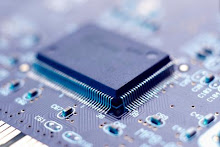There is nothing wrong with an incremental update—especially an update that adds performance without affecting pricing. Such is the case with AMD’s new Phenom II X4 965 Black Edition, which arrived at our performance lab running at 3.4 GHz—200 MHz faster than its predecessor, the Phenom II X4 955 BE. Everything else is exactly the same as the Phenom II X4 955, reviewed back in April 2009.
So, if the latest Phenom II is predictably faster than AMD’s former flagship, why is today’s launch so significant? In short, it comes just a few weeks ahead of Intel’s upcoming LGA 1156-based P55 platform debut—an event that’ll almost certainly play a bigger role in the adoption of Nehalem-based machines than either the LGA 1366 Core i7 or Xeon 5500-series CPUs have thus far. After all, LGA 1156 is going to be the interface that purportedly makes Intel’s latest architecture accessible to the mainstream, supplanting the Core 2 family at a number of affordable price points.
No doubt, those new Core i5/i7 CPUs will be faster than the Core 2 Quads they replace, and at competitive prices. Just when AMD looked like it had achieved performance parity with the top end of Intel’s Core micro-architecture, LGA 1156-based platforms seem almost certain to set the bar higher.
Thus, today’s Phenom II X4 965 BE introduction is actually a fairly important one for AMD. On one hand, it could earn the company its mainstream performance crown—at least for a few weeks. On the other, it could be the last time Phenom II looks as competitive as it does now. Of course, that’s going to depend mightily on how the upcoming Intel chips perform.
Up Against Core i5
Of course, we’re not able to publish performance numbers with the pre-production Core i5 processors currently running in the lab, so it’s hard to officially quantify how Phenom II will size up. But we can make best guesses using today’s Core i7s as rough test subjects.
You’ll find all of our usual benchmarks on the pages that follow. First, however, we wanted to set up Phenom II X4 965 BE against a hypothetical Core i5-750—a processor expected to cost less than $200 when it launches. We simulated the 2.66 GHz offering with a Core i7-920, which runs at the same clock rate. Of course, we had to pull out a single channel of memory (yielding two channels of DDR3-1333) and disable Hyper-Threading, since Core i5 won’t have that feature. The one variable we couldn’t reproduce was Core i5’s enhanced Turbo Boost, which is expected to accelerate clocks to 3.2 GHz when a single core is active. Core i7-920 only benefits from a single bin of Turbo Boost, yielding 2.8 GHz instead.
The only other platform capability setting LGA 1156 apart from LGA 1366 is the use of on-die PCI Express 2.0, which we’ve tested extensively and can say that, in single-card configurations, has almost zero impact on performance versus the X58’s chipset-based connectivity.




0 comments:
Post a Comment